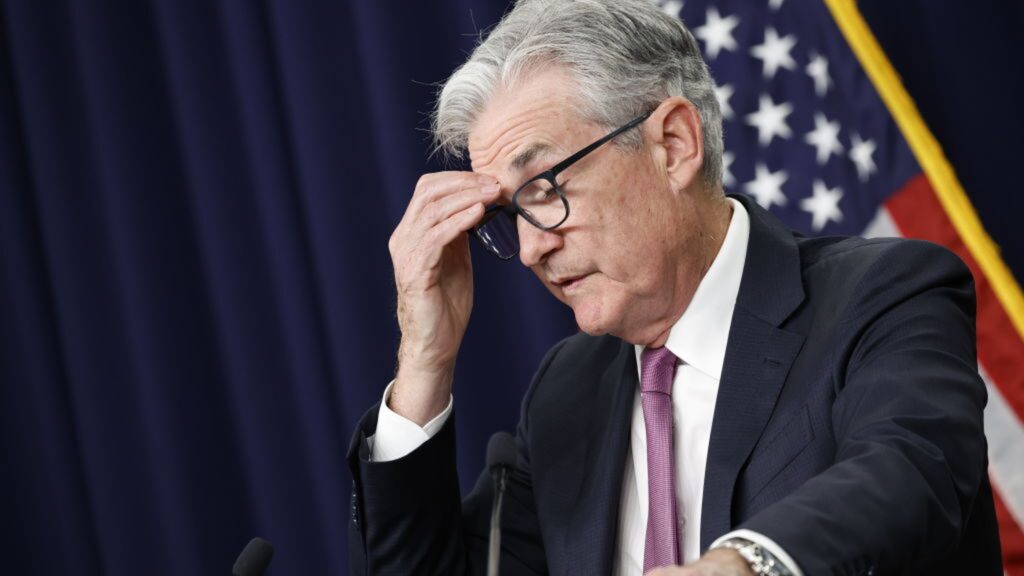Next Fed Meeting: What Day Is It in March and What To Expect
The next meeting of the Federal Open Market Committee (FOMC) is scheduled for March 19–20, 2024.1 This day has significant importance for investors, economists, and policymakers, who make note of it in their calendars. Most analysts anticipate that the Federal Reserve will maintain interest rates in the range of 5.25% to 5.50% since the Fed is still waiting for inflation to decrease further.
The FOMC functions as the body responsible for formulating monetary policy within the Federal Reserve System, and its decisions have significant consequences for the United States economy. The FOMC convenes on a regular basis, typically eight times a year, and may meet more often if necessary to discuss and make decisions about the country's interest rates and other financial issues. These choices have a significant impact on several aspects, such as the interest rates offered on your savings account and the borrowing costs for houses and companies. When the Federal Open Market Committee (FOMC) makes statements, individuals pay close attention.
KEY TAKEAWAYS
- The Federal Open Market Committee (FOMC) maintained interest rates unchanged at their last meeting in January 2024, as well as the preceding September and November sessions.
- The Federal Reserve indicated that interest rates may start to decrease in the near future, while also monitoring any shifts in economic circumstances.
- In the July 2023 meeting, the FOMC increased interest rates to a range of 5.25%–5.50%. This action represents the 11th rate rise in a series of measures intended to control elevated inflation. Since that time, the rates have remained constant.
- Several observers of the Federal Reserve express ongoing apprehension on the possibility of more interest rate hikes, citing concerns related to potential bank failures, stock market volatility, mortgage rates, and global economic instability.
The Latest Fed Moves
A range of 5.25% to 5.50% was maintained for interest rates during the most recent FOMC meeting, which took place on January 30-31, 2024.2 It was widely anticipated that the Federal Reserve would take this step so that it could assess whether the present interest rates effectively curb inflation without unduly impeding economic development. “The Committee does not expect it will be appropriate to reduce the target range until it has gained greater confidence that inflation is moving sustainably towards 2 percent.”
The meeting's minutes, on the other hand, had a rather hawkish tone. The FOMC hinted at the possibility of three rate cuts for 2024 during their meeting in December, but now they're using different wording. This meant that investors were expecting a more dovish tone at the January meeting. But as Fed Chairman Powell has already said, inflation is still a major worry.
After eleven rate hikes in 2022 and 2023 to rein down inflation, the Federal Reserve has kept interest rates at 5.25%–5.50% since July 2023. Chairman Jerome Powell of the Federal Reserve had already signalled following the September 2023 meeting that another raise was still possible before the year ended.4 Nevertheless, the Federal Reserve's vigorous rate-hiking effort in 2022 and 2023 seemed to have accomplished its goal, so that did not materialise. How long that lasts is anybody's guess.
Nevertheless, Federal Reserve Chair Jerome Powell emphasised that the central bank is still in the decision-making process and that it would go meeting by meeting. Powell also expressed his willingness to keep interest rates unchanged for as long as necessary.
What Happens at Fed Meetings?
The FOMC is the main committee of the Federal Reserve System, which is the US central bank, responsible for making decisions on monetary policy. In addition to its eight annual meetings, the FOMC may call extra sessions to apply policy instruments or establish emergency short-term interest rates.
The Federal Open Market Committee (FOMC) is comprised of twelve members: seven from the Federal Reserve System's Board of Governors, one from the Federal Reserve Bank of New York, and four from the other eleven reserve banks, who alternate between serving one year each. The Federal Open Market Committee (FOMC) meets monthly to discuss the state of the economy and financial markets, formulate monetary policy, and weigh the risks to the group's long-term objectives of maintaining price stability and promoting sustainable economic development.
Each meeting concludes with a statement outlining the FOMC's policy choices and economic assessment. There is an implementation note in the statement that explains the practical steps to take in order to put the policy decision into action. In addition, the FOMC releases its Summary of Economic Projections (SEP) four times a year. This document outlines the members' predictions for important economic indicators for the next three years, as well as their opinions on the suitable direction for the federal funds rate.
Though they are recorded and transcribed, the FOMC meetings are not open to the public. Every meeting's minutes are made public three weeks after the policy decision date. After five years, the transcripts will be made public.
Traditionally, the chair of the Federal Open Market Committee (FOMC) conducts a news conference after four out of the eight annual meetings. During these conferences, the chair elucidates the policy decision and addresses questions from media.
Next Fed Meeting: What to Expect in March
Experts and investors widely anticipate the Federal Reserve to maintain its current stance on interest rates at its upcoming policy meeting on March 19–20, 2024. The banking industry, stock market, and commerce are all vulnerable to the effects of persistently high interest rates, which the Fed must contend with. Based on the CME's FedWatch Tool, futures markets indicated a 50/50 possibility that the FOMC would start decreasing rates in 2024 after the January announcement, reversing course. These variables might influence its next rate decision. According to economists and futures markets, rates will indeed decrease by the summer.
The direction of inflation and the economy's health will determine this, naturally. Economic data that should be available in the coming weeks will have an impact on the Federal Reserve's policy decisions. This data will include indicators of inflation, employment, and productivity. Additionally, the Federal Reserve will keep a careful eye on the state of the credit markets, worldwide events, and financial markets.
The Federal Reserve is trying to strike a balance between its two mandates—maximum employment and price stability—in order to help the American economy have a smooth landing. Since the Federal Reserve's decision and announcement influence borrowing costs, market and asset values, and the trajectory of the US currency, they will have significant ramifications for investors.
Most Recent Fed Meeting (Jan. 2024)
Continuing their hiatus from an aggressive rate-hiking campaign that started in March 2022 to combat increasing inflation, the Federal Reserve kept rates stable at 5.25–5.50% in their most recent FOMC meeting decision, which was issued on January 31, 2024. Additionally, the Fed indicated its willingness to maintain rates unchanged until inflation moderates and approaches the 2% objective. Nevertheless, Powell, the chair of the Federal Reserve, had hinted in December that several rate decreases would occur later this year. However, the Federal Reserve has signalled that it will move cautiously while keeping an eye on the economy and continuing to shrink its balance sheet, reducing its holdings of mortgage-backed securities (MBS), agency debt, and Treasury securities.
After a string of rate rises that ended in July 2023 and another decision to keep rates stable in June, the market was bracing for the Federal Reserve to announce that rates would remain unchanged. The Fed had previously hinted that it may resume raising rates if inflation does not decrease. Inflation in the United States reached above 9% last year, prompting the Federal Reserve to increase interest rates over a dozen times since the beginning of 2022–2023. The goal was to slow down the economy.13 This has been the most active rate-hiking campaign by the Fed since the 1980s, and it caused considerable upheaval in the financial industry, the stock market, and economies throughout the world. But even at 5.50 percent, rates are lower than they were in the 1980s, when they were at their highest.
Although the Federal Reserve admitted that growth has slowed since the beginning of 2023, it said in January that the American economy is strong and the labour market is resilient. This is so, naturally, in spite of market highs never before seen. If no unexpected macroeconomic events occur, experts predict that the Fed will keep interest rates unchanged until the new year begins.
As per customary, the Federal Reserve vowed to fulfil its twin goals of full employment and price stability and promised to take the necessary action to maintain growth. The Federal Reserve will base its policy actions on economic data that is expected in the next few weeks and months, such as the Consumer Price Index (CPI), payrolls, and GDP growth.
“Minutes of the Federal Open Market Committee: June 13–14, 2023,” Pages 3–7, published by the Board of Governors of the Federal Reserve System.
The actions and remarks made by the Federal Reserve have significant ramifications for investors, as they impact the interest rates, asset valuations, and the strength of the U.S. currency. Investors and analysts closely monitor the signals and activities of the Federal Reserve, since they may greatly affect their investment portfolios, strategies, and recommendations.
Fed Meeting Calendar
The Federal Open Market Committee (FOMC) convenes on a regular basis, namely eight times every year. The following table displays the calendar spanning from December 2022 to 2024, along with the Federal Reserve's determinations about increases in interest rates.
| OMC Meeting Calendar for 2022–'24 | ||
|---|---|---|
| Date | Fed's Decision | Federal Funds Target Rate |
| Dec. 18, 2024 | TBD | TBD |
| Nov. 7, 2024 | TBD | TBD |
| Sep. 18, 2024 | TBD | TBD |
| July 31, 2024 | TBD | TBD |
| June 12, 2024 | TBD | TBD |
| May 1, 2024 | TBD | TBD |
| March 20, 2024 | TBD | TBD |
| Jan. 31, 2024 | Held Steady | 5.25%-5.50% |
| Dec. 13, 2023 | Held Steady | 5.25%-5.50% |
| Nov. 1, 2023 | Held Steady | 5.25%-5.50% |
| Sept. 20, 2023 | Held Steady | 5.25%-5.50% |
| July 26, 2023 | Raise +25 bps | 5.25%-5.50% |
| June 14, 2023 | Held steady | 5.00%–5.25% |
| May 3, 2023 | Raise +25 bps | 5.00%–5.25% |
| March 22, 2023 | Raise +25 bps | 4.75%–5.00% |
| Feb. 1, 2023 | Raise +25 bps | 4.50%–4.75% |
| Dec. 14, 2022 | Raise +25 bps | 4.25%–4.50% |
Did the Fed raise interest rates in January 2024?
Incorrect. The Federal Reserve maintained interest rates at the same level of 5.25%–5.50% at its January 2024 Federal Open Market Committee (FOMC) meeting. The rates have been constant at this level since July 2023.
How Many Rate Hikes Were There in 2023?
In 2023, there were a total of four instances when interest rates were raised. These hikes took place at the February, March, May, and July meetings of the Federal Open Market Committee (FOMC).
Does this year hold rate cuts by the Fed?
Although it is impossible to predict the specific decisions the Federal Reserve will make at their upcoming meetings, the announcement's tone suggested that the Fed would adopt a wait-and-see attitude. Futures markets now price a minor rate decrease as nearly inevitable by June 2024, but estimate a 50% likelihood that there will be no change during the March 2024 meeting.
The Final Analysis
March 2024 is the scheduled date of the next FOMC meeting. The stock market and banking industry have received some respite from the Fed's rate stability measures, which have been in place for many months at 5.25%–5.50%. Rate decreases by the Fed are expected in 2024, according to experts. However, this is subject to change based on economic developments in the next few weeks.



